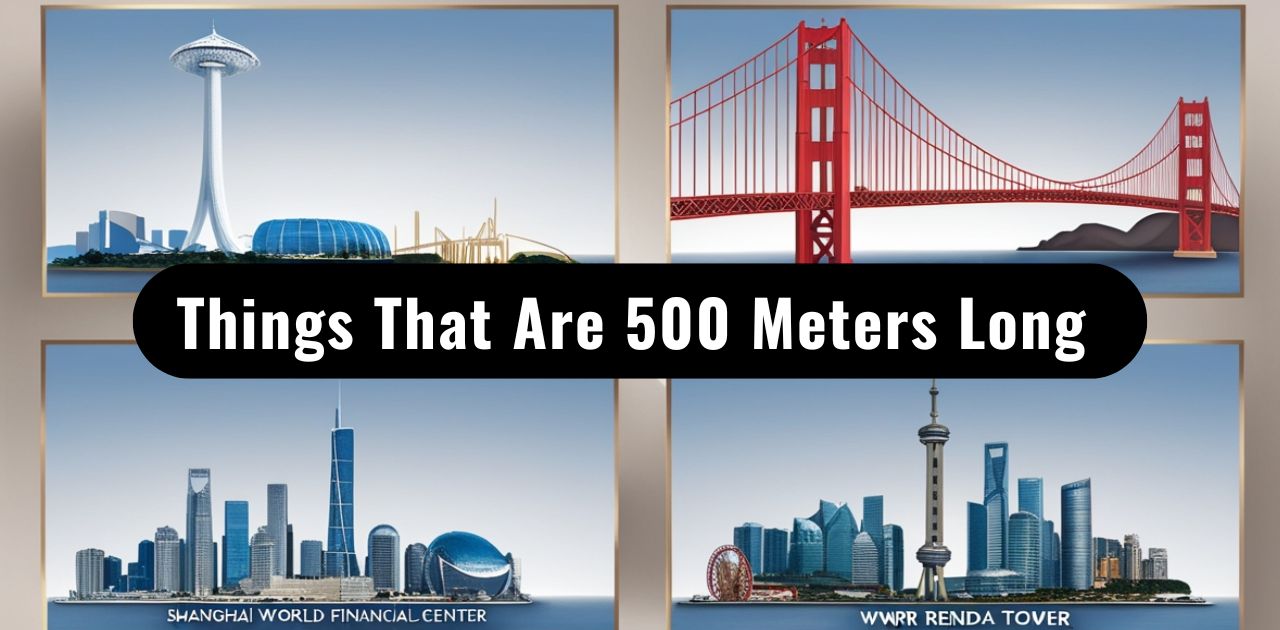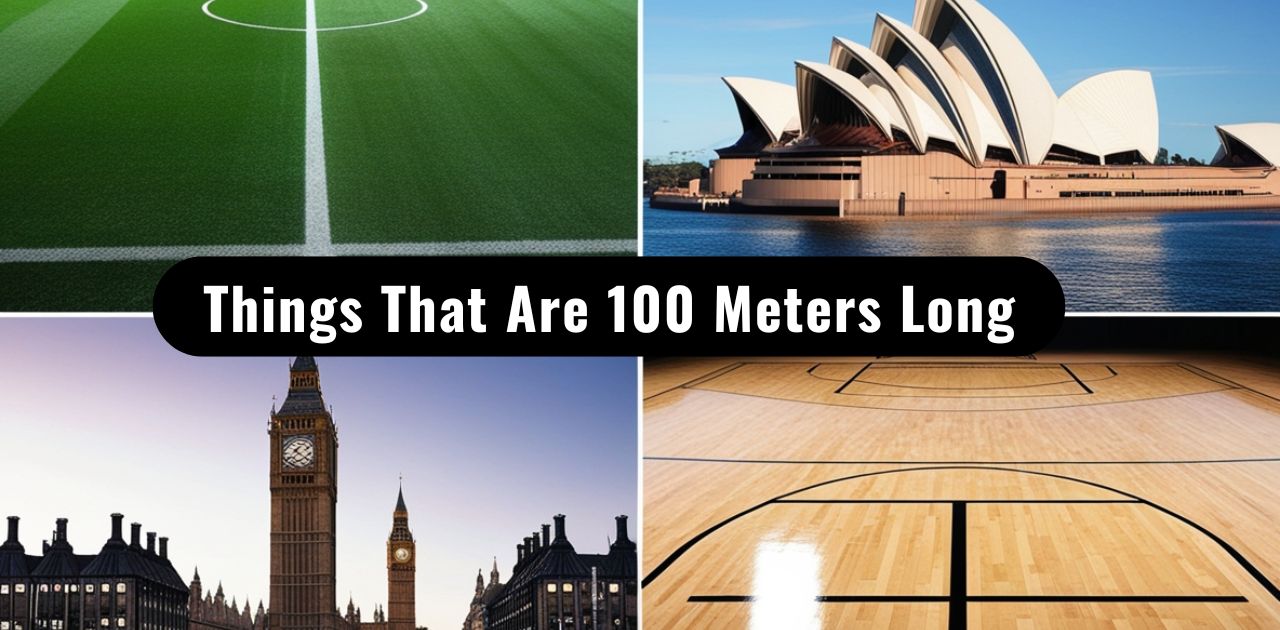The concept of 500 meters represents more than just a numerical measurement it’s a testament to human engineering, architectural innovation, and our collective ability to push the boundaries of vertical design.
Equivalent to 1,640 feet or half a kilometer, this impressive distance challenges our perception of scale and showcases the remarkable achievements of modern construction and urban development.
Throughout human history, engineers and architects have continuously sought to reach new heights, creating structures that not only serve practical purposes but also inspire awe and wonder.
These monumental designs represent more than mere buildings; they are physical manifestations of human ambition, technological prowess, and our endless quest to touch the sky.
How Big is 500 Meters Visually?
Visualizing 500 meters requires a comparative approach that helps transform an abstract measurement into a tangible understanding. Imagine standing beside the Washington Monument and stacking three identical structures vertically you would nearly reach this impressive height. This perspective allows us to comprehend the sheer magnitude of structures approaching this remarkable length.
To provide context, 500 meters is approximately equivalent to:
- Three Washington Monuments stacked vertically
- 1.5 times the height of the Eiffel Tower
- Twice the height of the Golden Gate Bridge towers
Things That Are 500 Meters Long or Big
- Twice the Height of the Golden Gate Bridge
- 1.5x the height of Eiffel tower
- Triple the Height of the Singapore Flyer
- BancFirst Tower
- Triple the Height of the Washington Monument
- 1.6x The Shard London height
- Richland Towers in Cedar Hill
- QueenB Television Tower
- Eureka Tower
- Shanghai World Financial Center
- Half The Height of The Angel Falls
- WWRR Renda Tower
1. Twice the Height of the Golden Gate Bridge

The Golden Gate Bridge, an engineering marvel spanning the San Francisco Bay, offers an extraordinary reference point for understanding massive structures. Its towers reach 227 meters, creating a stunning visual benchmark for vertical scale. By conceptualizing a hypothetical bridge with towers doubled in height, we gain profound insight into the potential of human engineering.
The actual Golden Gate Bridge contains an astounding 80,000 miles of wire and spans over 7,000 feet, representing a pinnacle of structural design. Its cables and massive anchorage systems demonstrate the complex engineering required to create such monumental infrastructure.
2. 1.5x the Height of the Eiffel Tower

Paris’s legendary Eiffel Tower stands as a quintessential example of 19th-century engineering innovation. Measuring 324 meters tall, this iconic structure represents more than just a landmark it symbolizes human capability to transform architectural imagination into reality.
When multiplied by 1.5, the Eiffel Tower approaches 486 meters, showcasing how innovative design can challenge traditional architectural limitations. Constructed in 1889, this structure continues to inspire engineers and architects worldwide, demonstrating that true innovation transcends temporal boundaries.
3. Triple the Height of the Singapore Flyer

The Singapore Flyer provides a fascinating perspective on vertical scale. Standing at 165 meters, this massive Ferris wheel transforms into an incredible 495-meter structure when conceptually tripled. More than an entertainment attraction, it represents the intersection of technological achievement and architectural creativity.
This remarkable structure offers visitors panoramic views of Singapore’s urban landscape, illustrating how entertainment infrastructure can simultaneously serve as a technological and architectural landmark.
4. BancFirst Tower: Oklahoma City’s Vertical Marvel

Located in the heart of Oklahoma City, the BancFirst Tower commands the skyline at precisely 500 meters. This architectural achievement represents more than just a building it’s a symbol of urban development and technological innovation. The tower stands as a testament to Oklahoma City’s economic growth and architectural ambition.
From its summit, visitors can experience breathtaking panoramic views that stretch across the city’s expansive landscape. The BancFirst Tower demonstrates how modern infrastructure can simultaneously serve functional purposes while creating iconic landmarks that define a city’s identity. Its strategic design incorporates advanced engineering techniques that maximize both structural integrity and aesthetic appeal.
Read Also >> Things That Are 100 Meters Long or Big
5. Triple the Height of the Washington Monument

The Washington Monument provides a historical perspective on vertical achievement. Standing at 169 meters, this iconic obelisk commemorates America’s first president and represents a remarkable feat of 19th-century engineering. When conceptually tripled, the structure reaches an astounding 507 meters, pushing the boundaries of architectural imagination.
Completed through complex private and public construction phases, the monument symbolizes more than just a historical landmark. It embodies the collective human spirit of reaching toward the sky, representing ambition, dedication, and the continuous pursuit of architectural excellence.
6: 1.6x The Shard London Height

London’s The Shard, designed by renowned Italian architect Renzo Piano, stands as a modern marvel of architectural innovation. Measuring 310 meters, the structure transforms the United Kingdom’s architectural landscape. When multiplied by 1.6, it approaches 496 meters, illustrating the city’s commitment to groundbreaking urban design.
The building’s unique glass façade reflects the sky, creating a dynamic visual experience that changes with weather and lighting conditions. Its 95 stories incorporate diverse spaces including offices, restaurants, and a hotel, demonstrating the multifunctional potential of contemporary architectural design.
7. Richland Towers in Cedar Hill

The Richland Towers represent a perfect fusion of technological functionality and architectural precision. Strategically engineered to approach 500 meters, these communication towers showcase how infrastructure can be both practical and visually impressive. They play a crucial role in telecommunications, ensuring widespread signal transmission across extensive regions.
Their design exemplifies the principle that functional structures can simultaneously serve technological purposes while contributing to the visual landscape of their environment. The towers stand as silent sentinels, connecting communities through advanced communication technologies.
8. QueenB Television Tower

More than a simple broadcasting structure, the QueenB Television Tower embodies the intersection of technological innovation and architectural aesthetics. Standing nearly 500 meters tall, it represents modern urban infrastructure’s complex requirements.
The tower incorporates green technologies, demonstrating a commitment to sustainable development. Its multifunctional design serves not just as a communication hub but also as a tourist attraction, featuring observation decks and restaurants that offer unique perspectives of the surrounding landscape.
9. Eureka Tower

Completed in 2006, Melbourne’s Eureka Tower reaches 297 meters, challenging traditional concepts of residential architecture. When multiplied by 1.7, it approaches 505 meters, showcasing Australia’s capacity for creating residential structures that push architectural boundaries.
With 91 stories, the tower represents more than just a living space it’s a vertical community that redefines urban living. Its design incorporates innovative architectural techniques that maximize living space while providing residents with breathtaking views of Melbourne’s dynamic cityscape.
10. Shanghai World Financial Center

The Shanghai World Financial Center, standing at 492 meters, represents more than a building it’s a symbol of economic progress and architectural innovation. Its unique trapezoid aperture transforms the structure from a mere skyscraper into a landmark of contemporary design.
Observation decks within the tower provide visitors unprecedented views of Shanghai’s sprawling urban landscape. The building embodies China’s economic ambition, representing the nation’s rapid technological and economic development through its impressive architectural achievement.
How Far is 500 Meters to Walk?
Walking 500 meters transforms an abstract measurement into a tangible, personal experience. This distance represents more than just a numerical calculation it’s a journey that allows individuals to physically engage with spatial perception. The average person can complete this walk in approximately 5 to 7 minutes, providing an intimate understanding of scale that transcends mere numerical representation.
Imagine traversing a distance equivalent to five standard athletic tracks or more than four football fields. Each step becomes a moment of discovery, revealing the nuanced details of urban landscapes and natural environments. The walk offers a unique opportunity to connect with one’s surroundings, transforming a simple movement into an exploration of spatial awareness.
How Far is 500 Meters in Minutes?
The relationship between distance and time reveals fascinating insights into human movement. An average adult walking at 5 kilometers per hour moves at approximately 1.4 meters per second. This calculation provides a scientific perspective on how we traverse space, breaking down abstract measurements into tangible experiences.
Time becomes a fluid concept when measured against distance. Those 5 to 7 minutes of walking represent more than just a temporal measurement they’re a personal journey of discovery. Professionals rushing to a meeting, tourists exploring a new city, or individuals enjoying a leisurely stroll each experience these moments differently.
Conclusion
Exploring structures and distances around 500 meters reveals a profound narrative about human potential. These landmarks represent more than physical achievements they are testament to our collective imagination, technological prowess, and unyielding desire to push beyond perceived limitations.
Understanding these massive structures is not merely about appreciating their height or length. It’s about recognizing the human spirit of innovation, the continuous pursuit of excellence, and our ability to imagine and create beyond seemingly impossible boundaries.
The journey of 500 meters becomes a metaphor for human potential a reminder that every step, every measurement, and every structure represents a collective achievement of imagination, technology, and unwavering human ambition.
FAQ’s
How far is 500 meters in miles to walk?
500 meters is approximately 0.31 miles, which takes about 5-7 minutes for an average person to walk.
How many football fields is 500 m?
500 meters is equivalent to roughly 5.5 standard football fields in length.
How long is 500 meters visually?
Visually, 500 meters is comparable to stacking three Washington Monuments vertically or stretching 1.5 times the height of the Eiffel Tower.
How many minutes walk is 500 meters?
An average person can walk 500 meters in approximately 5 to 7 minutes, depending on walking speed and terrain.
How far can you see from 500 meters up?
From 500 meters altitude, visibility can extend 25-30 miles on a clear day, depending on weather conditions and terrain.
How many steps is 500 meters?
For an average person, 500 meters is approximately 650-750 steps, varying based on individual stride length.





